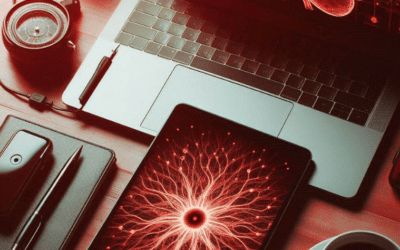Customers of the Teach on Mars solution get free membership of the Teach on Mars User Club, and benefit from exclusive sessions with our Academy experts. One of these exclusive sessions is the SkyLAB, which celebrated its comeback on Tuesday 5th December in Paris after a few months’ break.
What exactly is the SkyLAB?
This twice yearly gathering, held face-to-face in Paris, is a get together and brainstorming session run by our Academy to consider, with our clients, the issues and challenges they face on a daily basis.
These themed sessions are split into three parts:
- Welcome breakfast,
- Plenary session on a chosen topic,
- Working groups and feedback,
- All with a good helping of networking!
The topic chosen for this return was “Rewarding – received ideas and alternatives”, on how generating an efficient rewards strategy with which to motivate learners.
Unable to attend? Here’s a roundup of the key takeaways!
1- Learners motivation
To best contextualise rewarding, we started by establishing the status of the main theories of motivation.
All learning stems from it. Without this initial placing into motion, without this impetus from the heart, the mind – and even the body – learning is impossible.
(Vianin, 2007)
Theory 1 : intrinsic vs extrinsic
Intrinsic motivation is the act of doing something because it is interesting and enjoyable (curiosity, challenge, creativity, etc.).
Extrinsic motivation is driven by external rewards (certificate, gift, etc.).
Theory 2 : self-determination
According to this theory, people have 3 universal needs to feel:
- autonomy
- competence
- relatedness
People have a natural desire to learn, driven by the need to feel autonomous (I can do it alone), competent (I’m an expert on this topic) and related (knowledge on a par with others).
Theory 3 : reinforcement
According to this theory developed by B.F. Skinner:
- behaviour followed by pleasant consequences is more likely to be repeated (positive reinforcement)
- behaviour followed by an unpleasant consequence is less likely to be repeated (negative reinforcement, punishment, etc.)
2- The reward
In psychology, the reward is a stimulus or an event presented following a behaviour, with the aim of increasing the frequency of that behaviour; it is therefore a positive reinforcer.
3- Rewards and recognition in learning
Let’s look at the applications in the field of learning:
Examples of rewards:
- Tangible: offering a tangible reward after completing a course.
- Intangible: offering an intangible reward like certification after completing a course.
- Access to additional resources: providing access to additional resources, exclusive content or more advanced courses.
- Gamification: integrate gamification tools including points, badges, levels, etc. to make the learning experience more engaging.
Examples of acknowledgement:
- Create a culture of appreciation: celebrate big and small successes, by publicly acknowledging learners’ efforts (on the wall for example with top learners)
- Encourage positive feedback: provide constructive and positive comments to build trust and stimulate motivation
- Peer learning: Encourage learners to share their knowledge by organising peer presentations.
4- Structure your reward policy
|
Aims |
What is the aim of the rewards, is the aim to increase course completion, wall interactions, etc? |
|
Period |
Are you going to reward learners over a long period (trimester, year) or over a shorter period (a few weeks or days)? |
| Perimeter |
|
| Process |
|
| Type of reward |
|
| Communicate about your policy |
|
| Send the reward |
Establish the prize-giving procedures:
|
| Measure the policy’s effectiveness |
For example, implementing A/B testing with:
And comparing course completion rates. |
We hope this information will enable you to get a clearer picture regarding learner rewards and associated mechanisms.
See you in the spring for the next SkyLAB!

D’abord éditrice de manuels scolaires, professeure et coordinatrice pédagogique à l’Université, Julia a rejoint l’équipe Learning Experience chez Teach on Mars pour apporter ses compétences en pédagogie. La gamification et la différenciation pédagogique sont notamment ses chevaux de bataille.




